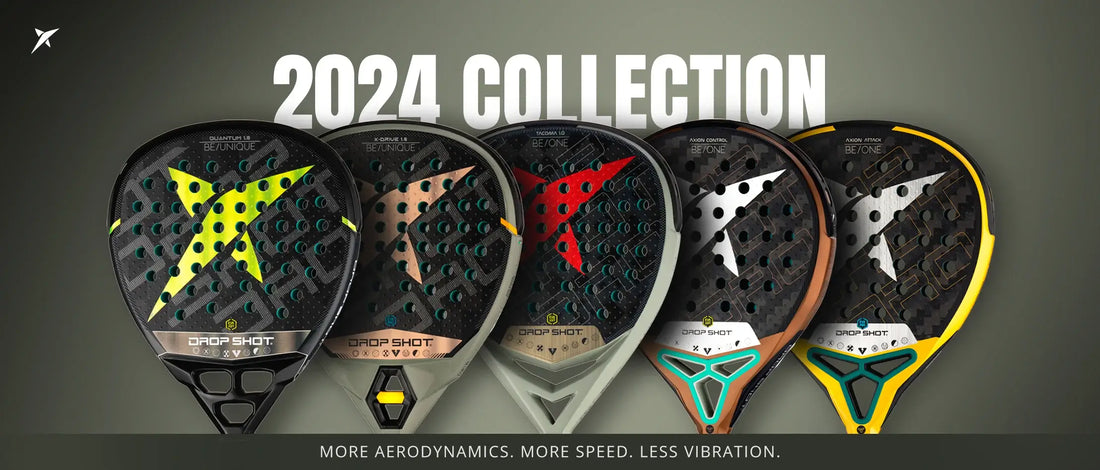Ever wondered about the intriguing world of pickleball? It's a sport that's been quietly gaining traction and winning hearts, yet it's possible you've never heard of it.
This article is your gateway into understanding this fascinating game that's sweeping across the globe.
Pickleball, a unique blend of ping-pong, tennis, and badminton, offers a compelling mix of strategy, skill, and fun. Whether you're a seasoned sports enthusiast or just looking for a new hobby, pickleball could be your next obsession.
So, let's dive into the ins and outs of this intriguing game and discover why it's capturing so many people's imaginations.
Understanding the Basics of Pickleball
Unlock profound insights into pickleball now. Grasp the essentials, from gear to the layout of the court.
Equipment Needed for Pickleball
Pickleball involves simple equipment. Essential gear includes a pickleball paddle and a plastic ball with holes. Profit from quality equipment that enhances playability. For instance, graphite paddles offer excellent response and feel, while top-notch plastic balls - such as the Jugs Pickleball - boast superior durability and consistent bounce.
The Pickleball Court Layout
The design of a pickleball court mirrors a scaled-down tennis court. Grasp, for instance, that dimensions of a pickleball court stand at 20 feet wide and 44 feet long. Isolate the court into two 15 feet long service courts and a 7-foot non-volley zone in front of the net. Serve from behind the baseline, aiming to land the ball in the opponent’s service court.
Note, only the serving team can score - and scoring comes by making the opposing team miss the ball or hit out of bounds. The first team to breach the 11 points barrier with at least a 2-point cushion emerges victorious.
Rules of Pickleball
After getting accustomed to the layout and equipment of pickleball, it's now time for you to gain an insight into the specific rules of this intriguing sport binding together elements of tennis, ping-pong, and badminton. Let's dive into the scoring mechanism, serving rules, faults and penalties.
Scoring in Pickleball
Pickleball involves a unique scoring system. A team can only score points when serving. Corresponding to the system known as server-sideout scoring, a match goes up to 11 points, with players needing to secure a two-point lead to emerge victorious. For example, if both teams reach 10 points, the game will continue until one team has a leading score by two points.
Serving Rules
Serve commands quite a strategy in pickleball. The player serving initiates the play diagonally, aiming into the opposing team's court. Known as the underhand serve, the paddle contact with the ball has to be below the server's waist level. To preclude the opposite team from volleying, each serving team must allow the ball to bounce once prior to their returns, termed as the double-bounce rule or two-bounce rule.
Faults and Penalties
Faults in pickleball cover a wide array of violations. The player commits a fault when the ball touches the non-volley zone or the 'kitchen' on either the serve or the volley. The ball striking the net, or not reaching the opponent’s area on the serve also constitutes a fault. Penalties occur with repeated faults leading to loss of serve or point.
For instance, if the player violates the non-volley zone rule, it results in loss of serve and hence the chance for scoring. Simply put, the game's nature rewards fair play, feed accuracy or timing precision; repeated faults can offer an advantage to the opposite team.
How to Play Pickleball
Pickleball intricacy goes beyond service rules and scoring mechanisms. Let's dive deeper into technique implementation, strategy, and playing format variations.
Basic Techniques and Skills
Pull on your paddles; a good grasp of essential techniques stands paramount in pickleball. Practice underhand servings, which, unlike overhand, limits paddle wind-up, promoting an effective low-to-high swing motion.
Mitigate penalties by committing the two-bounce rule to your playstyle. This rule dictates a ball must bounce once on each side before initiating volleys, a critical step to counter non-volley zone violations.
Game Strategy and Tips
Master the dink shot. This low, slow trajectory shot strategically lands in the non-volley zone, triggering opponents to respond likewise, thus decreasing their power shot scope and offering you an advantageous position.
Understand the kitchen area, euphemistically termed after the phrase "If you're in the kitchen, you're in hot water." This marks a non-volley zone extending 7 feet from either side of the net. Controls groundstroke play, hence, strategically placing opponent volley inside this area could disrupt their stance, providing scoring opportunities.
Singles versus Doubles Play
In pickleball, singles and doubles play hold different strategic appeals. Singles play hinges on speed and agility with more court coverage required per person. Successful play lies in energy conservation, making smart shot selections, focusing mostly on opponent's backhand, the typically weaker response point.
In contrast, in doubles play, teamwork and communication become pivotal. Placement of shots, commonly diagonal, places the ball between opposing players, causing hesitations and errors. Your shared court expanse diminishes, hence, setting a solid defence against volleys guarantees dominance.
Bear in mind, pickleball remains an enthralling sport disguised in simplicity. However, astute strategies, techniques and continuous practice transform this seemingly basic game into an exciting strategic ensemble.
Benefits of Playing Pickleball
Delving deeper into the realm of Pickleball, you'll encounter a host of benefits. Let's categorise these perks into physical and mental health benefits that you derive from the sport.
Physical Health Benefits
Engaging in pickleball sparks numerous perks for your health.
Endurance improvement stands as a principal benefit. Stationed on a court of 20x44 feet, chasing a ball around taxes your cardiovascular system, enhancing your stamina.
Flexibility and balance make a significant stint in pickleball. Darting to the ball, extending your arm for a shot, and contorting your body to save points amplify your mobility and maintain equilibrium.
Calorie burn becomes an unspoken advantage. A lively hour of pickleball can burn around 600 calories. It's a fabulous way to have fun and cut down extra flab.
Mental Health and Social Benefits
Cognitive skills development emerges as an intriguing aspect of playing pickleball. As you master the rules, develop strategies and adapt your gameplay, cognitive functions like focus, spatial awareness and problem-solving skills get polished.
Stress reduction follows suit. Pickleball serves as an escape from routine clamour, providing an outlet for releasing pent-up stress and boosting mood.
Social engagement features as a prime benefit. Pickleball is an amazing social sport, promoting interaction, collaboration and camaraderie. Having fun with like-minded individuals fosters a sense of community and cultivates long-lasting relationships. Whether you play singles or doubles, meeting and collaborating with others contributes to a positive and stimulating social environment.
Pickleball, at a glance, thus, appears as a multifaceted sport with a gamut of physical and mental health benefits. Immerse in this delightful sport and harness these worthwhile benefits.
Getting Started with Pickleball
You are now familiarised with pickleball's concept, rules, tricks and health benefits. Let's move one step ahead and learn about initiating your pickleball journey.
Finding Places to Play
Your pickleball journey starts from finding the right place to play. Many public parks, community centres, schools, and recreational sports facilities in your vicinity might have dedicated pickleball courts. Online tools like the USAPA’s Places2Play can help you locate pickleball courts nearby. Refer to online lists of registered pickleball venues and get started.
Joining Pickleball Clubs and Communities
Taking an extra step to bridge the gap between you and pickleball by joining a local club or community culminates this sport's essence. Active participation in clubs aids in networking with experienced players, keeping one updated about local tournaments, and honing skills through regular practice sessions.
Go online and join pickleball communities on popular social media platforms like Facebook or Meetup for a two-way interaction with fellow pickleball enthusiasts.
Remember, always choose a club that accommodates your level whether beginner, intermediate or advanced, fosters growth and suits your availability and location.
Common Issues and Troubleshooting
With sporting endeavours like pickleball come the possibilities of injuries and equipment issues, which are not uncommon. This section targets both of these aspects.
Dealing with Common Injuries
While actively engaging in any sport, injuries may occur. In pickleball, these generally revolve around the foot, ankle, elbow, or shoulder. A sprained ankle, tennis elbow, or a rotator cuff tear represent examples of common pickleball injuries.
Upon encountering an injury, immediate care is imperative, initiating with resting the affected area. Applying ice wrapped in a thin cloth on the injured area for 10-15 minutes can help control the swelling. If pain persists beyond a few days, or is severe, consult a medical professional.
Moreover, don't disregard the importance of a pre-game warm-up. By increasing blood flow to your muscles, warm-ups can help prevent injuries. Opt for dynamic stretches like lunges or high knees, instead of static stretching which can increase the risk of sprains.
Equipment Issues and Solutions
Pickleball equipment is crucial to your game, so encountering problems can potentially thwart your performance. Paddle surface damage and worn-out pickleball shoes signify two common equipment issues.
If your paddle surface begins to splinter or crack, it's time to invest in a new one. While paddles can undergo minor repairs, major surface damage dictates paddle replacement. Alternatively, friction issues due to worn-out soles can lead to falls or missteps. As such, it is recommended to replace pickleball shoes after approximately 500 miles of use (based on professional advice).
Remember, proper maintenance can prolong the lifespan of your pickleball equipment. Regular cleaning of the paddle and the use of high-quality shoe creams can keep your gear in top condition.
Conclusion
So, you've now got the lowdown on pickleball. It's a dynamic sport that's not just fun, but also offers numerous physical and mental health perks.
Remember, finding a local club or using online resources can be your stepping stone into this exciting game.
Don't forget the importance of warm-ups and equipment care to dodge those common pickleball issues. Whether it's about sprained ankles or paddle damages, prevention is always better than cure.
So, ready to give pickleball a shot? It's a game that's definitely worth trying. It might just become your new favourite pastime.








